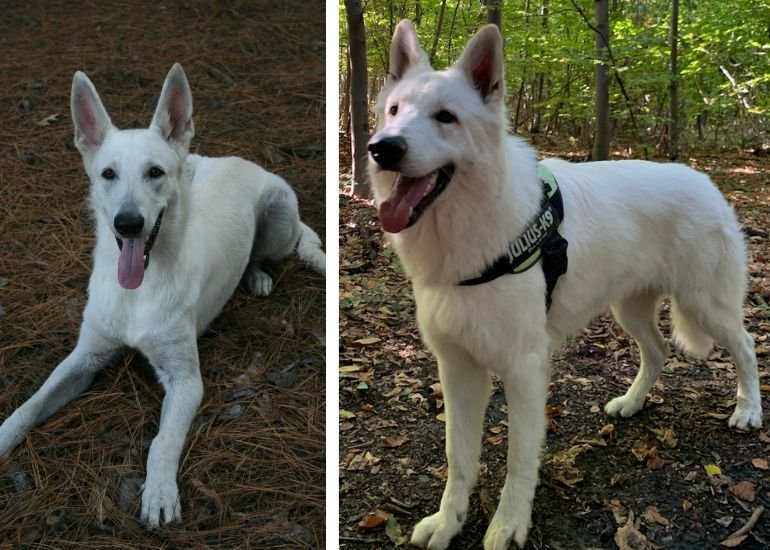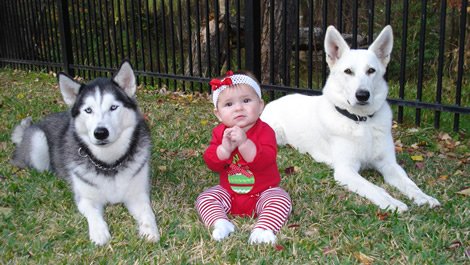Looking for a loyal and gentle companion for your little ones? Look no further than the White Shepherds! Known for their striking appearance and friendly demeanor, White Shepherds have gained popularity as family dogs. But are they really good with children? Let’s explore the unique bond these fur-babies share with kids and discover why they might just be the perfect addition to your family.
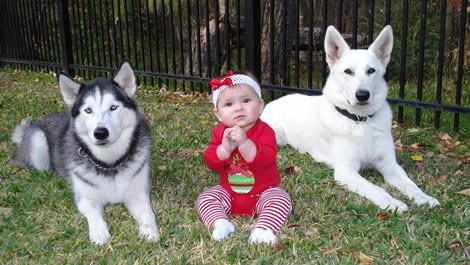
Physical characteristics of White Shepherds
Distinctive features of White Shepherds
White Shepherds are known for their beautiful white coats, which set them apart from other German Shepherd varieties. They have a strong, muscular build and a well-balanced body structure. Their heads are proportionate to their bodies, with a defined stop and a black nose. One of their most striking features is their dark, almond-shaped eyes that radiate intelligence and curiosity. White Shepherds also have erect ears that are shaped like triangles, giving them an alert and attentive appearance.
Size and weight
White Shepherds are a medium to large-sized breed. On average, males can reach a height of 24 to 26 inches at the shoulder, while females are slightly smaller at 22 to 24 inches. In terms of weight, males typically weigh between 65 to 90 pounds, while females weigh around 50 to 70 pounds. It’s important to note that individual White Shepherds may vary in size, so it’s best to consult with a reputable breeder or veterinarian to determine the specific size and weight range of a particular dog.
Coat type and grooming needs
White Shepherds have a double coat that consists of a soft, insulating undercoat and a longer, coarser outer coat. Their fur is predominantly white, but it can have slight variations in shading. This double coat helps protect them from different weather conditions, including both cold and hot climates. However, it also means they shed moderately throughout the year. Regular brushing is necessary to maintain their coat’s health and prevent matting. White Shepherds also require occasional baths, nail trims, and ear cleanings to ensure overall cleanliness and well-being.
Energy level and exercise requirements
White Shepherds are an active and high-energy breed that thrives on physical exercise and mental stimulation. They have a natural inclination to work, which stems from their herding and guarding instincts. As a result, they require ample opportunities to burn off energy and engage in activities that challenge their minds. Daily exercise is essential for a White Shepherd’s overall well-being and can include activities such as brisk walks, jogs, obedience training sessions, fetch, and interactive playtime. Providing them with sufficient mental and physical exercise helps prevent boredom and potential behavioral issues that can arise from pent-up energy.
Temperament and behavior of White Shepherds
General temperament of White Shepherds
White Shepherds are well-regarded for their loyal, loving, and affectionate nature. They form strong bonds with their families and are known to be devoted companions. They thrive on human interaction and are happiest when included in family activities. White Shepherds are often described as gentle and patient, making them a great match for families with children.
Protective instincts and guarding behavior
White Shepherds possess a protective nature, which makes them excellent guard dogs. They have an instinctual drive to protect their loved ones, including children. While this can be an advantageous trait in terms of ensuring the safety of your family, it’s important to properly socialize and train White Shepherds to distinguish between real threats and normal everyday situations.
Ability to bond with children
White Shepherds have a strong capacity to form deep bonds with children. They are known to be gentle and patient when interacting with youngsters, making them suitable for families with kids of all ages. White Shepherds often become protective and watchful over children, ensuring their safety and well-being.
Affectionate and gentle nature
White Shepherds are hailed for their gentle and kind demeanor. They are known to be affectionate towards their family members, including children. This breed often displays an innate sensitivity towards the needs of their human companions and excels at providing emotional support.
Intelligence and trainability
White Shepherds are highly intelligent and trainable dogs. They possess a strong desire to learn and please their owners, which makes training them a rewarding experience. Their intelligence allows them to quickly grasp commands and tasks, making them well-suited for various training activities such as obedience, agility, and even advanced tricks. Ensuring proper training and socialization from an early age is crucial to nurture their intelligence and ensure they grow into well-behaved family pets.
Importance of choosing the right breed for families with children
Considering the needs of both the dog and the children
When choosing a breed for a family with children, it’s important to consider the needs and characteristics of both the dog and the children. The breed should be compatible with the family’s lifestyle, energy levels, and space constraints. It’s critical to select a breed that is known for its patient, gentle, and tolerant nature towards children.
Compatibility between White Shepherds and children
White Shepherds are generally compatible with children and often thrive in a family environment. They have a natural affinity for kids and their protective instincts make them excellent companions for youngsters. However, it’s essential to supervise interactions between the dog and children and teach both parties how to properly interact and respect each other’s boundaries.
Exploring other suitable breeds for families with children
While White Shepherds are a great option for families with children, there are other breeds that may also be suitable. Labrador Retrievers, Golden Retrievers, and Beagles are known for their friendly and patient nature around kids. Boxers and Bulldogs also tend to be great family dogs due to their affectionate and protective instincts. Ultimately, the decision should be based on the specific needs and preferences of the family.
Positive traits of White Shepherds in relation to children
White Shepherds as loyal and devoted companions
White Shepherds are renowned for their unwavering loyalty and devotion to their families. They form strong bonds with their human companions, including children, and strive to protect and please them. This loyalty and dedication make them incredibly reliable family pets.
Highly protective nature towards children
One of the standout qualities of White Shepherds is their natural protective instinct, especially when it comes to children. They are vigilant and watchful over kids, ensuring their safety and well-being. This makes White Shepherds excellent companions for families seeking a dog that will act as a guardian and protector for their children.
Ability to adapt to various family dynamics
White Shepherds are versatile dogs that can adapt well to various family dynamics. Whether your family is active and outgoing or prefers a quieter and more relaxed lifestyle, White Shepherds can adjust their energy levels and behavior to suit your family’s needs. They have a strong desire to be included in family activities and are content with both playtime and downtime with their loved ones.
Playful and energetic interactions with children
White Shepherds thrive on interactive play and enjoy participating in physical activities with children. They are known to engage in playful interactions, such as fetch and hide-and-seek, which not only provide exercise but also foster strong bonds between the dog and child. These lively interactions help children develop a sense of responsibility and empathy towards animals.
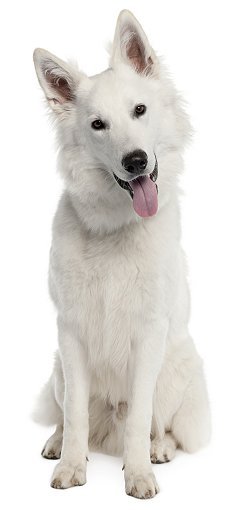
Potential challenges of owning a White Shepherd with children
White Shepherds’ need for mental and physical stimulation
Due to their high energy levels and intelligence, White Shepherds require regular mental and physical exercise to stay happy and fulfilled. Families with children should be prepared to provide ample opportunities for their White Shepherd to burn off energy through activities such as walks, interactive play, and training sessions. Neglecting these needs can result in undesirable behaviors, such as excessive barking or destructive tendencies.
Potential for high energy levels and excitement
While White Shepherds can be playful and energetic, their exuberance may not always be well-suited for very young or more timid children. Their enthusiasm can sometimes be overwhelming for small children, so it’s important to teach both the dog and the children appropriate behavior and set boundaries to ensure safe and enjoyable interactions.
Patience and consistency required in training
White Shepherds are an intelligent breed that thrives on training and mental stimulation. However, they can be strong-willed at times, requiring patience and consistency from their owners. Families with children should be prepared to invest time and effort into training their White Shepherd and providing consistent guidance to ensure they understand and obey commands.
Addressing any potential behavior issues
As with any breed, there is always the potential for behavior issues to arise with White Shepherds, especially if they are not given proper training, socialization, and boundaries. Families should be prepared to address these issues in a firm yet gentle manner, and seek professional guidance if necessary. By proactively addressing any behavior issues, families can provide a safe and harmonious environment for both the dog and the children.
Training and socialization of White Shepherds with children
Importance of early socialization
Early socialization is crucial for White Shepherds to develop into well-rounded and confident dogs. Introducing them to a variety of people, animals, and environments from a young age helps build their social skills and allows them to feel comfortable and relaxed in different situations. Encouraging positive interactions with children during this critical period helps White Shepherds develop a positive association with them and enhances their ability to bond effectively.
Positive reinforcement training techniques
White Shepherds respond exceptionally well to positive reinforcement training techniques. These techniques involve rewarding desired behaviors with treats, praise, or play, rather than using punishment or harsh corrections. This approach motivates White Shepherds to learn and obey commands willingly and enhances their bond with their owners. When training with children, it’s important to involve them in the process and teach them how to reward the dog appropriately, always under adult supervision.
Teaching children how to interact and handle the dog
Children should be taught how to interact and handle a White Shepherd safely and respectfully. They should learn to approach the dog calmly and politely, avoiding sudden movements or loud noises. Children should also be instructed not to disturb the dog while sleeping, eating, or engaging in activities that require concentration. Teaching children about the importance of gentle handling and respect for personal space ensures a positive and harmonious relationship between the dog and the children.
Establishing boundaries and rules for both dog and children
Clear boundaries and rules should be established for both the White Shepherd and the children. This helps create a structured and harmonious environment where everyone knows what is expected of them. Children should be educated about appropriate behavior around the dog, such as not pulling on their ears or tail, and not bothering them when they are resting or eating. Consistency and reinforcement of these boundaries are essential to ensure a safe and enjoyable interaction between the dog and the children.

Introducing White Shepherds to children – best practices
Gradual and supervised introductions
When introducing a White Shepherd to children, it’s important to do so gradually and under supervision. Both the dog and the children may feel anxious or uncertain in the beginning, so it’s advisable to introduce them in a calm and controlled environment. Start with short and supervised interactions, gradually increasing the duration and the level of interaction as everyone becomes more comfortable.
Teaching children proper behavior around the dog
Children should be taught proper behavior and etiquette around dogs. They should understand not to approach the dog abruptly, pull on their fur, or startle them with sudden movements. Encourage children to use gentle, slow movements and talk in a soft and calm voice when interacting with the White Shepherd. Teach them to respect the dog’s boundaries and signal signs of discomfort, such as growling or snarling, as a sign to back off and give the dog space.
Encouraging gentle handling and respect for personal space
White Shepherds, like any dog, have their own personal space and may not always appreciate being cuddled or hugged tightly. Teach children to ask for permission before petting the dog and to approach from the side, allowing the dog to sniff their hand first. Encourage gentle stroking rather than rough handling and emphasize the importance of respecting the dog’s individual comfort zone.
Supervision and safety considerations with White Shepherds and children
Importance of constant supervision
Whenever children and White Shepherds are in the same space, it is crucial to maintain constant supervision. Children may not always be aware of their own strength or the boundaries they should observe. Having an adult present at all times ensures the safety and well-being of both the child and the dog.
Teaching children how to interact safely with the dog
Educating children about the potential risks and proper behavior around the dog is essential to promote a safe and harmonious environment. Children should be taught not to tease, hit, or pull on the dog in any way. They should understand that a dog may react if they feel threatened or scared, and that they should respect the dog’s boundaries and personal space.
Preventing rough play or aggressive behaviors
Children may sometimes engage in rough play, which can be misinterpreted by a White Shepherd and trigger an aggressive response. It’s important to teach children appropriate play behavior, such as avoiding rough wrestling or tug-of-war games. Additionally, it’s crucial to discourage any teasing or taunting behaviors, as this can be harmful to both the child and the dog.
Creating a safe environment for both dog and children
To ensure the safety and well-being of both the White Shepherd and the children, it’s important to create a safe environment. This includes establishing secure boundaries, providing a designated space for the dog’s belongings, and removing any potential hazards or toxic substances from reach. Investing in proper training and secure fencing also contributes to a safe environment for the dog to play and interact with the children.
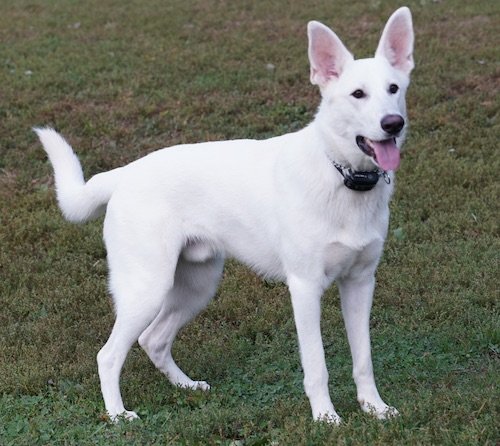
Health considerations for White Shepherds as family pets
White Shepherds, like all dog breeds, are prone to certain health issues that prospective owners should be aware of. These can include hip and elbow dysplasia, degenerative myelopathy, bloat, and skin allergies. Regular veterinary check-ups, a nutritious diet, exercise, and maintaining a healthy weight are important factors in preventing or managing these health conditions. It’s advisable to consult with a reputable breeder or veterinarian to ensure the best possible health outcomes for your White Shepherd.
Final thoughts: White Shepherds and children – a good match?
Assessing the suitability of White Shepherds for your specific family
When considering whether White Shepherds are a good match for your family, it’s important to assess your family’s lifestyle, energy levels, and ability to meet the needs of a high-energy and intelligent breed. White Shepherds require dedicated training, exercise, and mental stimulation, as well as constant supervision when interacting with children.
Factors to consider before bringing a White Shepherd into a household with children
Before bringing a White Shepherd into a household with children, it is crucial to consider factors such as the age and temperament of the children, the level of commitment and time available for training and exercise, and the ability to ensure constant supervision and safety. It’s also advisable to involve the entire family in the decision-making process and take into account any allergies or sensitivities that family members may have to dog dander.
Alternative options and breeds to explore for families with children
While White Shepherds can be a great fit for families with children, there are other breeds that may also be suitable. Labrador Retrievers, Golden Retrievers, and Beagles are known for their friendly and patient nature around kids. Boxers and Bulldogs also tend to be great family dogs due to their affectionate and protective instincts. Each family is unique, and it’s important to carefully consider the individual needs and preferences of your family when selecting the right breed for your home.
In summary, White Shepherds can make wonderful companions for families with children, thanks to their loyal and gentle nature. They possess a strong protective instinct and often form deep bonds with children, providing a watchful eye and a loving presence. However, it’s important to provide proper training, socialization, and supervision to ensure a safe and harmonious environment for both the dogs and the children. By understanding the physical and behavioral traits of White Shepherds and taking appropriate precautions, families can enjoy the joys of having this exceptional breed as part of their family unit.
